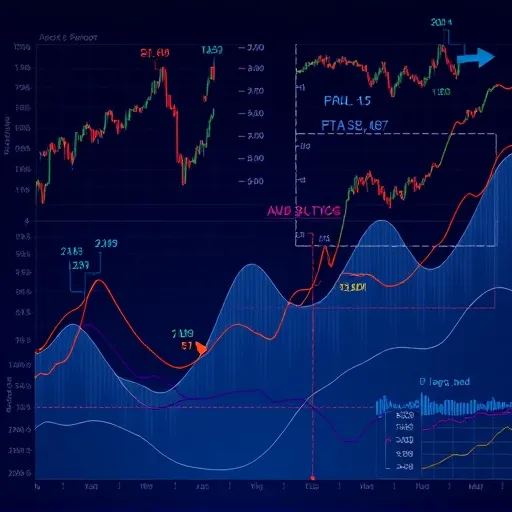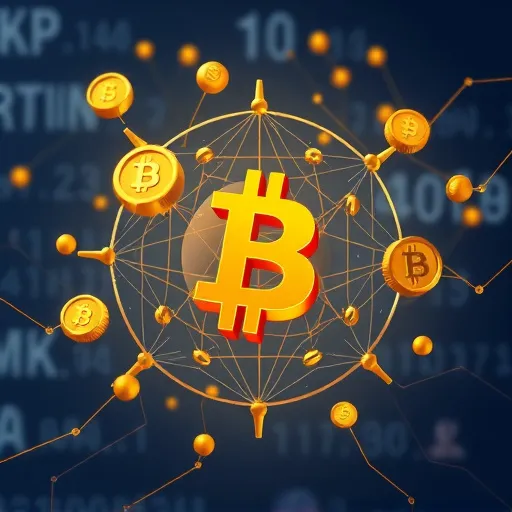In the rapidly evolving landscape of decentralized finance (DeFi), perpetual decentralized exchanges (DEXs) like GMX have emerged as pivotal platforms, offering users the ability to trade perpetual contracts with high leverage and minimal fees. As we navigate through 2025, the demand for innovative and user-centric DEX platforms continues to surge, presenting a lucrative opportunity for entrepreneurs and developers to create alternatives that cater to the diverse needs of the crypto community.
Reflecting on the journey of DeFi, it’s evident how platforms like GMX have revolutionized trading by eliminating intermediaries and providing users with greater control over their assets. The integration of features such as on-chain trading, real-time price feeds, and community governance has set new standards in the industry. However, there’s always room for innovation and improvement, opening doors for new entrants to make their mark.
This comprehensive guide delves into the essential components of developing a GMX alternative app. From understanding critical features and technological requirements to exploring monetization strategies and compliance considerations, this article equips entrepreneurs and startups with the knowledge needed to navigate the DeFi domain successfully.
As we delve deeper, we’ll explore the intricacies of developing a GMX alternative app, highlighting the challenges and opportunities that come with it. Whether you’re a budding entrepreneur or an established business looking to venture into the DeFi sector, this guide offers valuable insights to help you make informed decisions.

Key Features of a GMX Alternative App
To build a competitive perpetual DEX, consider integrating the following features:
| Feature | Description |
|---|---|
| Perpetual Contract Trading | Enables users to trade perpetual contracts with leverage, allowing for both long and short positions without expiry dates. |
| On-Chain Order Execution | Facilitates transparent and secure order execution directly on the blockchain, enhancing trust and reducing reliance on intermediaries. |
| Real-Time Price Feeds | Integrates reliable oracles to provide accurate and up-to-date price information for various trading pairs. |
| Liquidity Pools | Allows users to provide liquidity to the platform, earning fees and rewards in return, thereby ensuring sufficient liquidity for trading activities. |
| User-Friendly Interface | Offers an intuitive and responsive UI/UX design that caters to both novice and experienced traders. |
| Security Measures | Implements robust security protocols, including two-factor authentication, encryption, and regular audits to safeguard user assets and data. |
| Community Governance | Empowers users to participate in decision-making processes through governance tokens, fostering a sense of ownership and community engagement. |
Also Read :-Best GMX Clone Scripts in 2025: Features & Pricing Compared
Technology Stack and Architecture
Choosing the right technology stack is crucial for the scalability and performance of your DEX:
| Component | Technology |
|---|---|
| Frontend Development | React.js or Vue.js for building responsive and dynamic user interfaces. |
| Backend Development | Node.js or Python for handling server-side operations and API integrations. |
| Smart Contracts | Solidity for developing secure and efficient smart contracts on Ethereum or compatible blockchains. |
| Blockchain Platform | Ethereum Layer 2 solutions like Arbitrum or Optimism for faster and cost-effective transactions. |
| Oracles | Chainlink or Band Protocol for integrating reliable and decentralized price feeds. |
| Database | MongoDB or PostgreSQL for managing user data and transaction histories. |
| Hosting Services | AWS or Google Cloud for scalable and reliable hosting infrastructure. |
Compliance and Security Considerations
Ensuring compliance with regulatory standards and implementing robust security measures are paramount:
Regulatory Compliance
Ensure full adherence to both local and international regulations to maintain legal integrity and user trust. This includes meeting KYC (Know Your Customer) and AML (Anti-Money Laundering) standards, acquiring the necessary licenses, and aligning with regional financial and data protection laws. Staying compliant not only prevents legal issues but also builds long-term credibility with users and partners.
Smart Contract Audits
Thoroughly audit all smart contracts before deployment to identify potential vulnerabilities or logic flaws. Partner with reputable third-party auditors or use automated testing tools to ensure transparency, security, and immutability. Audited contracts help safeguard funds and assure users that your platform operates on secure, tamper-proof code.
Data Protection & Security
Implement end-to-end encryption protocols, secure database architecture, and multi-factor authentication to protect user information. Use AES-256 encryption, encrypted backups, and secure APIs to minimize the risk of data breaches. Ensuring data privacy is critical for maintaining user confidence, especially in platforms handling personal and financial details.
Risk Management
Establish robust systems to identify, monitor, and mitigate platform risks—especially in areas like high-leverage trading, flash crashes, or market manipulation. This includes setting circuit breakers, position limits, automated liquidation mechanisms, and real-time volatility tracking. A well-defined risk management framework is vital to ensure platform stability and protect user assets.
Monetization Strategies
To generate revenue and sustain the platform, consider the following monetization models:
- Trading Fees: Charge a small percentage on each trade executed on the platform.
- Withdrawal Fees: Implement fees for withdrawing funds from the platform to external wallets.
- Premium Features: Offer advanced trading tools and analytics as part of a subscription-based model.
- Tokenomics: Introduce a native token that can be used for trading fee discounts, governance participation, and staking rewards.

Challenges in Building a Scalable Perpetual DEX
While the opportunities are vast, several challenges need addressing:
- Liquidity Provision: Ensuring sufficient liquidity for various trading pairs is critical for smooth operations and user satisfaction.
- Market Competition: Differentiating your platform in a crowded market requires unique features and a strong value proposition.
- Technical Complexity: Developing and maintaining a secure and efficient DEX involves intricate technical knowledge and continuous updates.
- User Education: Educating users about the functionalities and risks associated with perpetual trading is essential for responsible usage.
Choosing the Right Development Partner
Selecting an experienced development partner is crucial for the success of your DEX:
Expertise in DeFi
Select a development team with a proven track record in building decentralized finance (DeFi) applications. Deep understanding of tokenomics, liquidity pools, staking mechanisms, and governance protocols is essential. Their familiarity with the fast-evolving DeFi landscape ensures your project aligns with market standards and user expectations.
Security-First Approach
Security is non-negotiable in DeFi. Partner with developers who prioritize secure coding practices, follow audit-ready protocols, and have experience performing or managing smart contract audits. Their proactive approach to identifying and mitigating vulnerabilities will safeguard your users’ assets and protect the integrity of your platform.
Learn More :-Reasons startup choose our gmx clone over custom development
Post-Launch Support & Maintenance
Choose a team that doesn’t disappear after deployment. Reliable post-launch support ensures ongoing performance monitoring, bug fixes, updates, and feature enhancements. This is especially crucial in DeFi, where security patches, regulatory adjustments, and user feedback demand rapid iteration.
Customization & Flexibility
Your platform should reflect your unique vision—not just a standard template. Look for developers who offer end-to-end customization capabilities, from user interface design to integrating advanced smart contract logic, cross-chain compatibility, and tailored governance models. A flexible partner can adapt the product to evolving needs and innovation.
Read More :-Pre-launch vs Post-launch Marketing for GMX Clone Startups
Conclusion
Developing a GMX alternative app in 2025 presents a promising opportunity to tap into the burgeoning DeFi market. By focusing on user-centric features, robust security measures, and compliance with regulatory standards, you can create a platform that not only meets the needs of modern traders but also stands out in a competitive landscape.
Embracing innovation and leveraging cutting-edge technologies can transform your vision into a successful decentralized exchange. By partnering with Miracuves experts and staying attuned to market trends, you can navigate the complexities of app development and deliver exceptional value to users.
FAQs
1. What is a GMX alternative app?
A GMX alternative app is a decentralized exchange platform that offers similar functionalities to GMX, such as perpetual contract trading, on-chain order execution, and community governance, but may include additional features or improvements tailored to specific user needs.
2. How much does it cost to develop a GMX alternative app?
The development cost varies based on features, technology stack, and development partner. On average, it can range from $50,000 to $200,000.
3. Is it legal to operate a decentralized exchange app?
Yes, but it requires compliance with local and international regulations, including KYC/AML requirements and data protection laws.
4. How can I ensure the security of user data in my app?
Implement encryption protocols, secure storage solutions, and conduct regular audits to protect user data from breaches and unauthorized access.
5. What are the key features to include in a GMX alternative app?
Essential features include perpetual contract trading, on-chain order execution, real-time price feeds, liquidity pools, user-friendly interface, security measures, and community governance.
6. How can I monetize my decentralized exchange app?
Monetization strategies include trading fees, withdrawal fees, premium features, and introducing a native token for various utilities within the platform.
Related Articles :-







